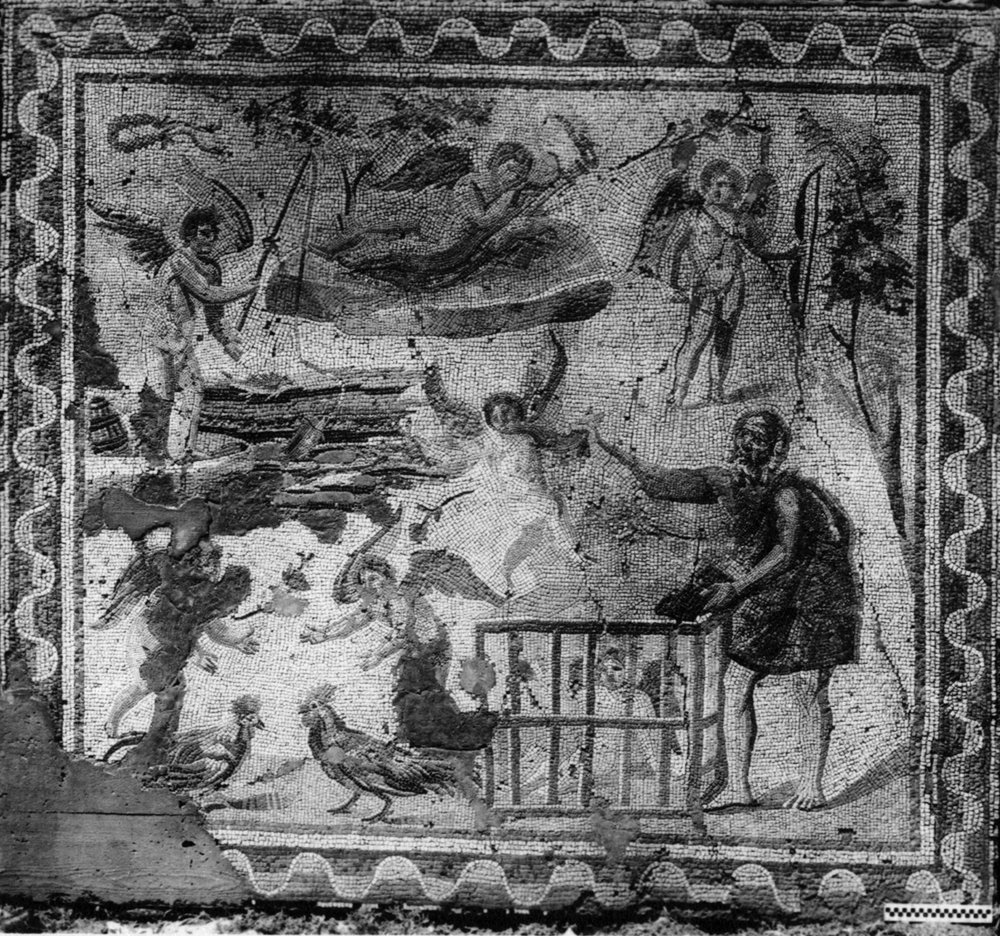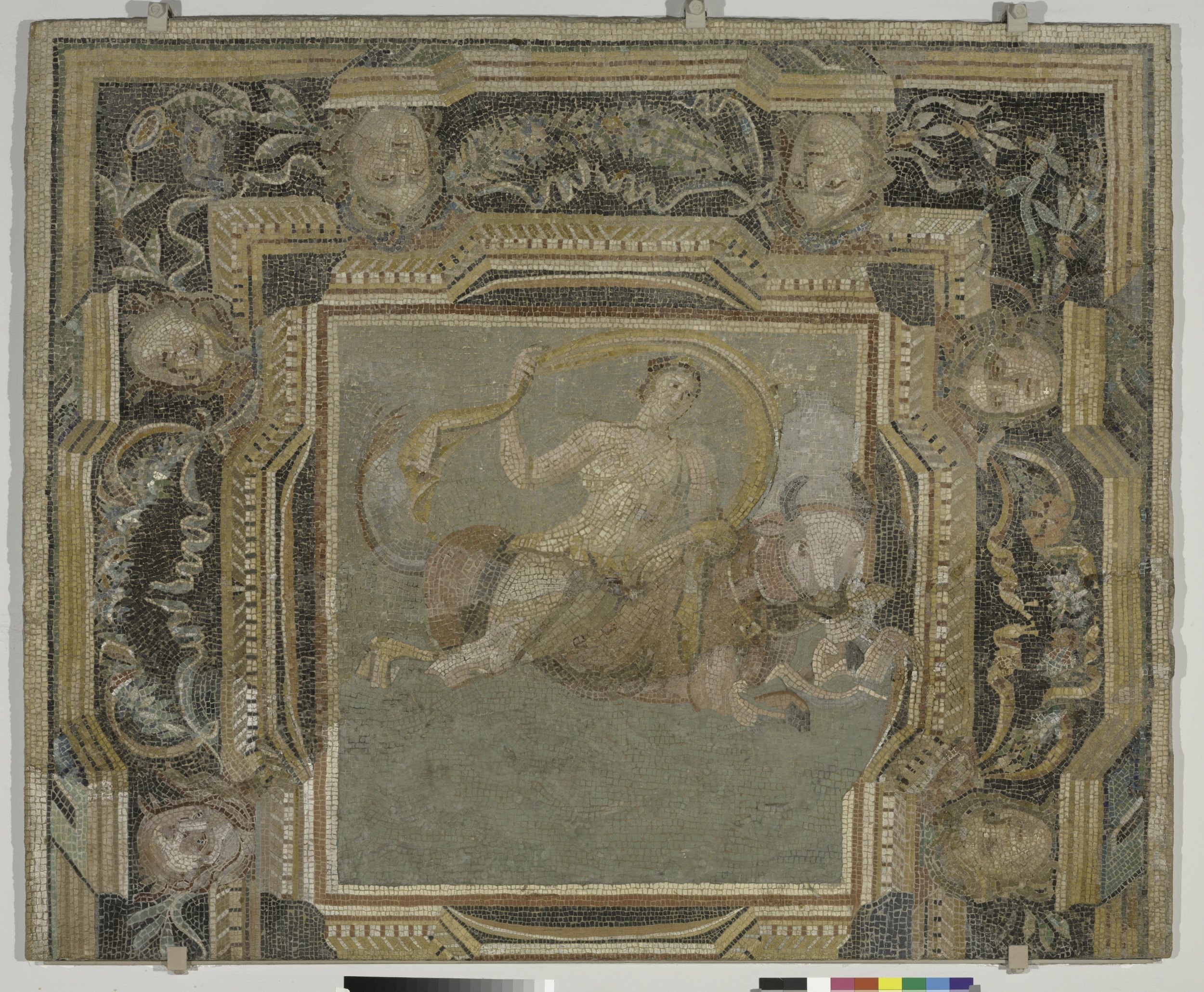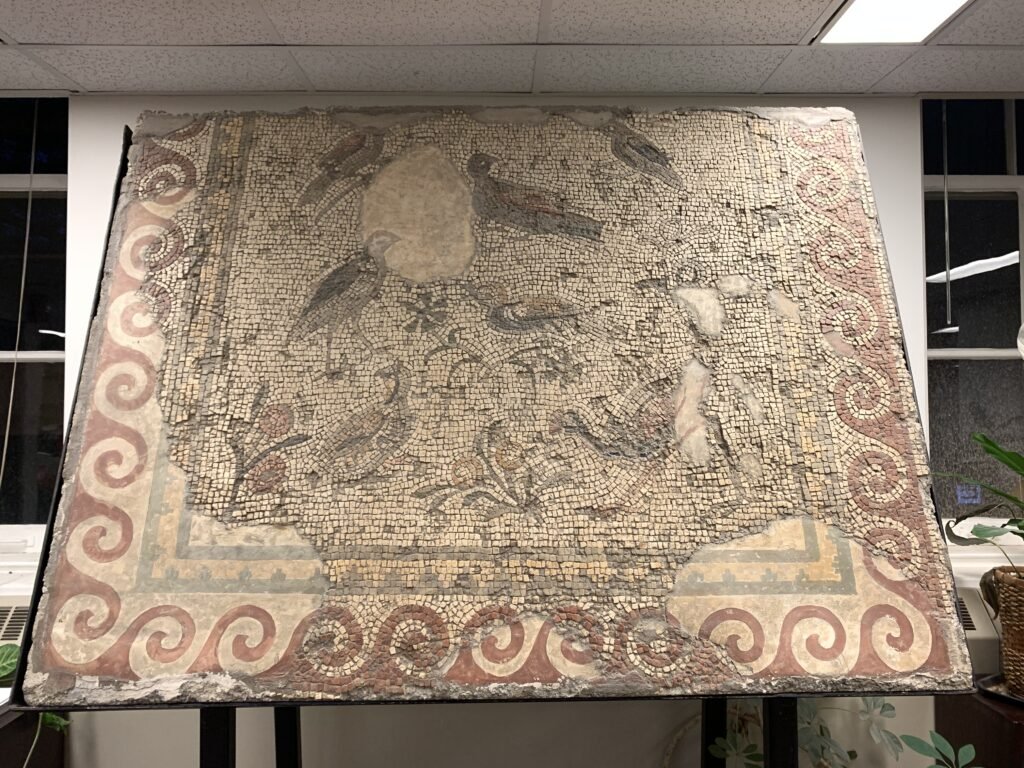
On Europa's Journey: Unraveling the Myth and Lebanese Identity (William Okaily, ARP.3)
As part of the Antioch Recovery Project, I delve into the study of a mosaic fragment, currently housed at the Baltimore Museum of Art. Through the study of the Europa and the Bull myth portrayed in this piece, I hope to present a distinct lens through which we can view both the ancient world and its echoes in contemporary times, with a special emphasis on its significance for Lebanon. My exploration revolves around understanding the mosaic's relevance in the context of its creation in the 3rd century and its continued resonance today. This journey is not just a historical one; it is also an inquiry into the evolving nature of mythology and its impact on cultural and national identity. In the realm of myths, there are no singular truths or definitive versions. These narratives are shaped and reshaped by the cultures that adopt them, each rendition reflecting the diverse perspectives and historical contexts of its time. In this study, I embrace the multifaceted nature of the Europa myth. Rather than attempting to categorize or seek an 'actual' version, I explore the various stories that have emerged across different cultures and periods. Myths, in their diversity, offer a tapestry of insights and meanings, each as valid as the next.

Antioch Mosaics in Unlikely Places (Morgan Brown, ARP.3)
I focused my research project on three Antioch mosaics found in unusual places: the Cilicia mosaic and Interlacing Circles mosaic from the Sam Noble Oklahoma Museum of Natural History and the House of the Buffet Supper Central mosaic from La Universidad Católica de Santo Tomás de Villanueva (Villanova University) (figures 1, 2, and 3). These mosaics are, or were last seen in, Norman, Oklahoma and Havana, Cuba, respectively. I completed field research by visiting Sam Noble to view the two mosaics and talk with the curator, Dr. Claire Nicholas. For the Villanova mosaic, I translated a passage from a yearbook to confirm that a photograph depicts the Antioch mosaic fragments at the university in 1957.


Publicizing the Ancient City: Antioch on-the-Orontes’ Relationship to Baltimore, per 20th-century Newspapers (Jacqueline Rosenkranz, ARP.3)
In a review of C. R. Morey’s 1938 art book entitled The Mosaics of Antioch, the authoring critic argues that “There are a few finds, in the history of archeology, which have instantly captured the attention of the average layman and have become thoroughly publicized and even à la mode” (“New Art Books”, p. 139-40). This comment elicits a few questions. Why did the Antioch mosaics fascinate the “layman” and “instantly capture” public attention? Importantly, what exactly was “thorough” publicity saying to drive this unique engagement?


Antiochene Echoes: Transformation and Reformation of Narkisos and Ekhō at Daphne
Students viewing the fragment of a mosaic floor depicting Narcissus and Echo from a balcony overlooking a stairwell in the Baltimore Museum of Art



The Mosaic of Opora, Agros, and Oinos at Dinner
Drawing on the theatrical elements of the mosaic


Europa and the Bull
The excavation, conservation, and cultural significance of Europa and the Bull


The Narcissus Mosaic Pavement from The House of Narcissus
Parallels between the Narcissus mosaic and other artwork depicted Narcissus



From Baltimore to Havana: Tracking Down the Distribution of Antioch Mosaic
Beginning to track the dispersion of mosaics across the world
